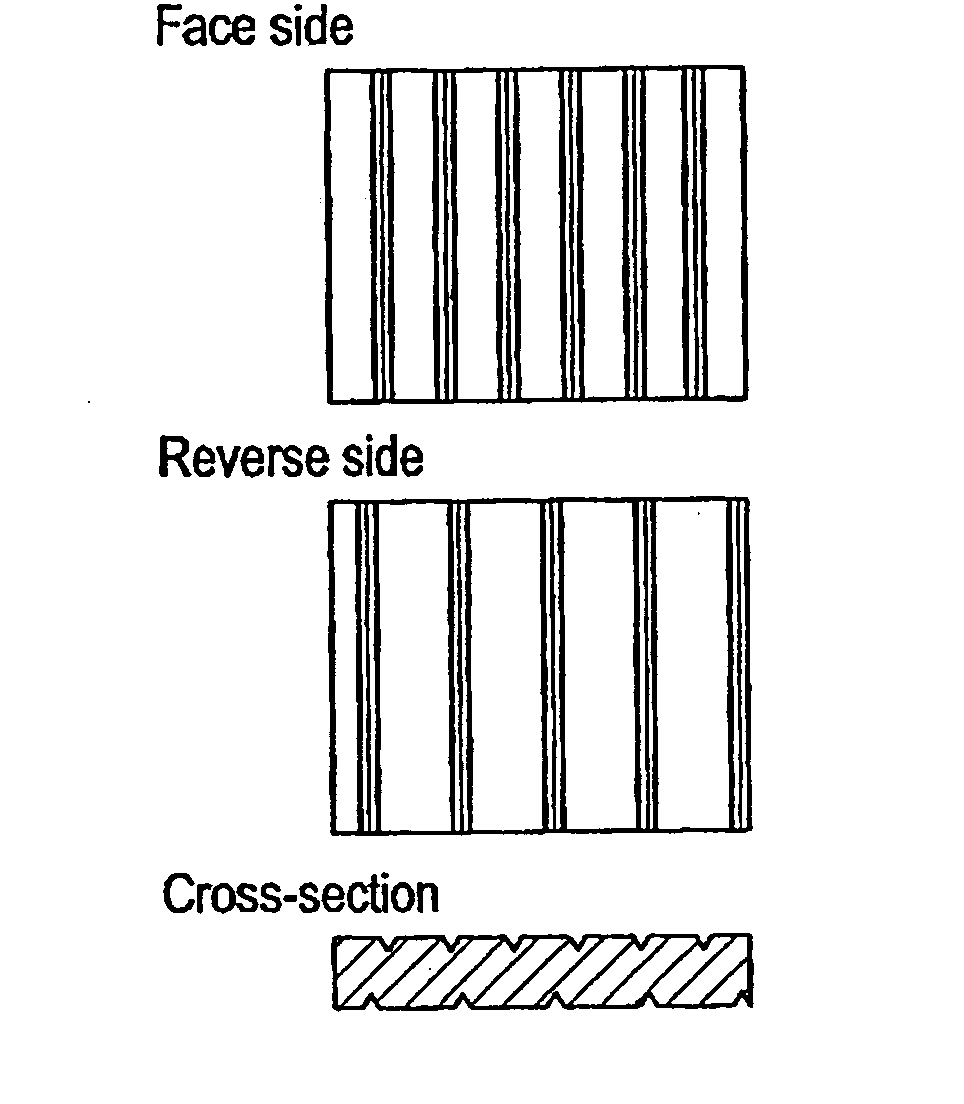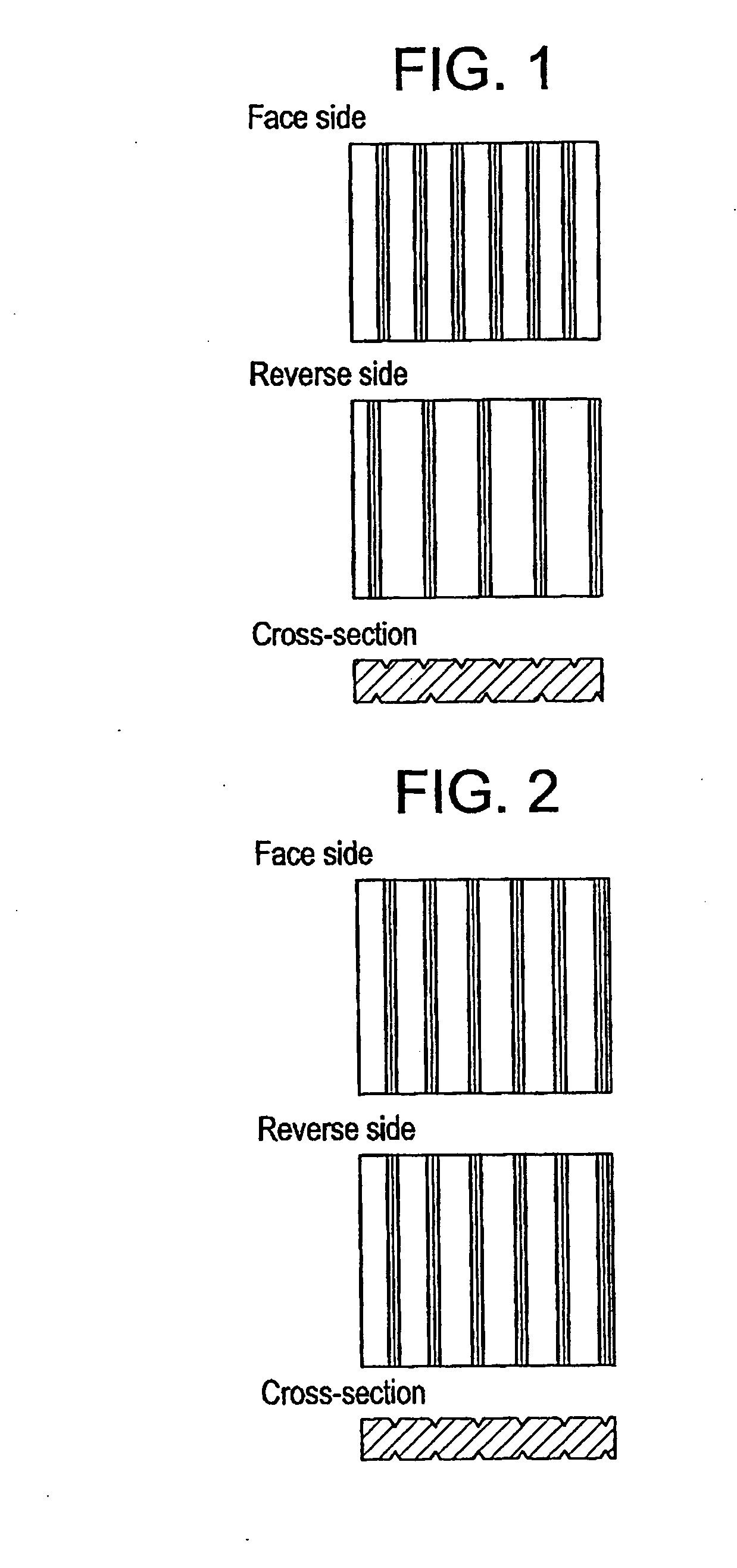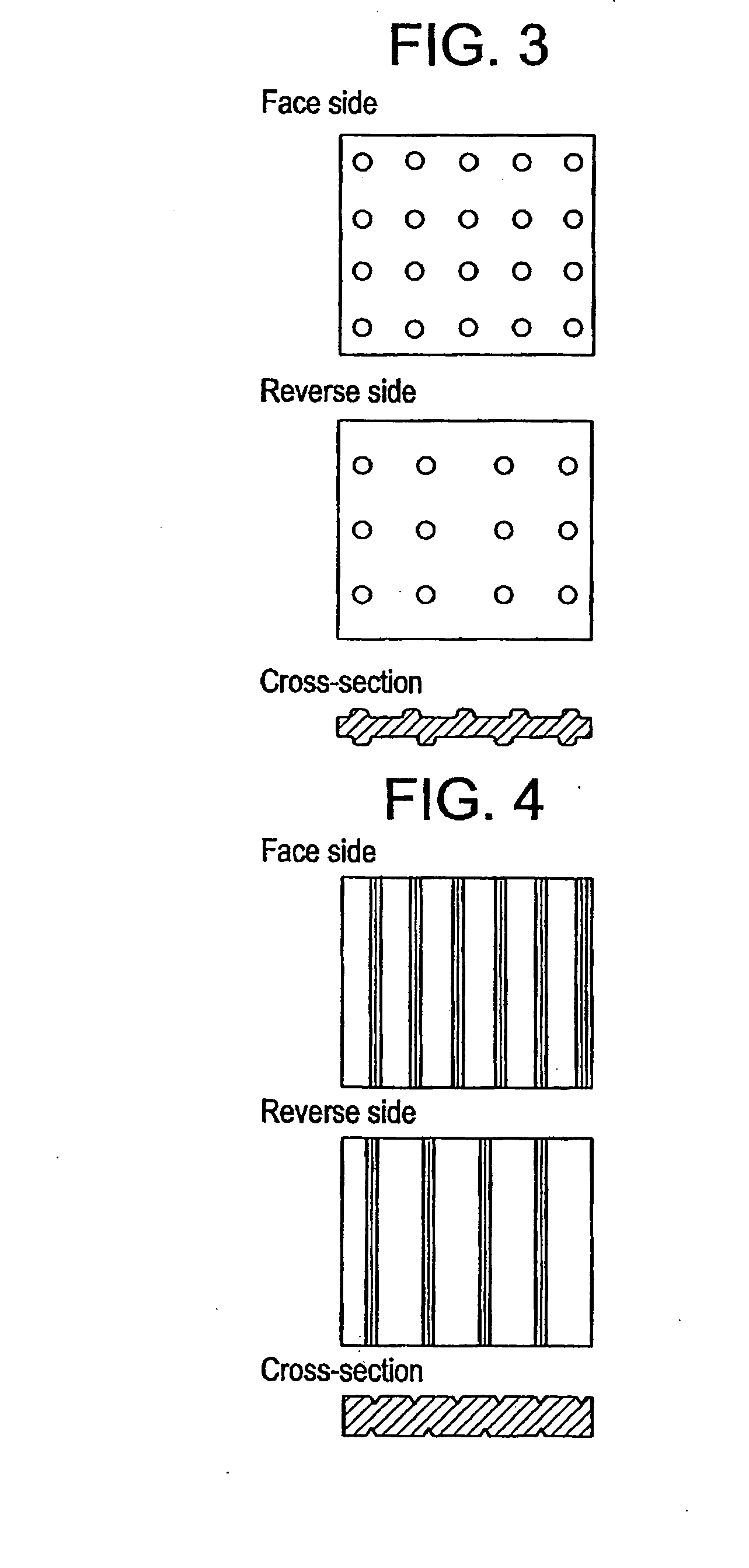Interlayer for laminated glass and laminated glass
a technology of laminated glass and interlayers, which is applied in the direction of layered products, transportation and packaging, chemical instruments and processes, etc., can solve the problems of moir phenomenon, streak-like diffraction image, diffraction surface, etc., and achieve good cutting workability and good deaeration
- Summary
- Abstract
- Description
- Claims
- Application Information
AI Technical Summary
Benefits of technology
Problems solved by technology
Method used
Image
Examples
example 2
[0184] Except that the pitch of the embossment of one engraving mill (mother mill) was changed to 300 .mu.m and the pitch of the embossment of the other engraving mill (mother mill) was changed to 375 .mu.m, the procedure of Example 1 was repeated to manufacture an interlayer for a laminated glass having an orderly array of linear embossments on both sides and varying in the pitch of embossments from one side to the other side.
example 3
[0185] Except that the pitch of the embossments of one engraving mill (mother mill) was changed to 300 .mu.m and the pitch of the embossments of the other engraving mill (mother mill) was changed to 430 .mu.m, the procedure of Example 1 was repeated to manufacture an interlayer for a laminated glass having an orderly array of linear embossments on both sides and varying in the pitch of embossments from one side to the other side.
[0186] The face side, reverse side, and cross-section views of the embossment designs (concave and convex patterns) of the interlayers for laminated glass as obtained in Examples 1 to 3 are schematically illustrated in FIG. 1.
example 4
[0189] To 100 parts by weight of polyvinyl butyral resin (average degree of polymerization 1700, residual acetyl group 1 mol %, butyralization degree 65 mol %) was added 40 parts by weight of the plasticizer triethylene glycol-di-2-ethylbutyrate (3 GH) and, using an extruder, the resulting mixture was melt-kneaded and extruded in a sheet form from the extrusion die to give a 0.76 mm-thick polyvinyl butyral resin sheet (PVB sheet).
[0190] An engraving mill (mother mill) having a hemispherical embossment design was forced against the surface of one of a pair of metal embossing rolls and this metal roll and the engraving mill were driven in association to transfer the embossment design of the engraving mill to the metal roll. Then, the engraving mill was shifted in the axial direction of the metal roll in steps of the unit embossment design to transfer the embossment design of the engraving mill to the metal roll in the same manner as above to construct an embossing roll having an order...
PUM
| Property | Measurement | Unit |
|---|---|---|
| surface roughness | aaaaa | aaaaa |
| surface roughness | aaaaa | aaaaa |
| angle | aaaaa | aaaaa |
Abstract
Description
Claims
Application Information
 Login to View More
Login to View More - R&D
- Intellectual Property
- Life Sciences
- Materials
- Tech Scout
- Unparalleled Data Quality
- Higher Quality Content
- 60% Fewer Hallucinations
Browse by: Latest US Patents, China's latest patents, Technical Efficacy Thesaurus, Application Domain, Technology Topic, Popular Technical Reports.
© 2025 PatSnap. All rights reserved.Legal|Privacy policy|Modern Slavery Act Transparency Statement|Sitemap|About US| Contact US: help@patsnap.com



